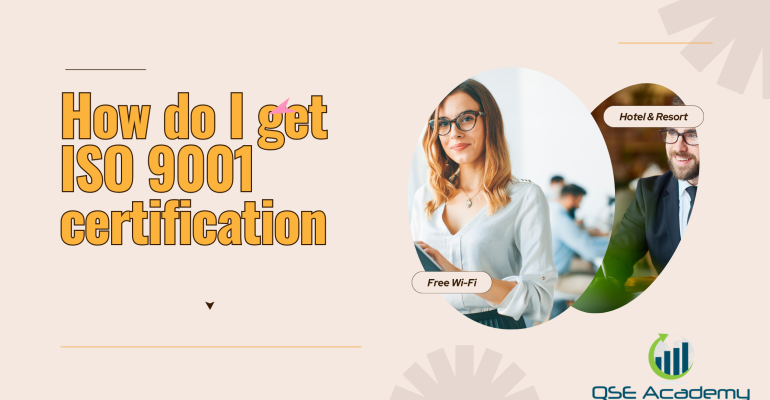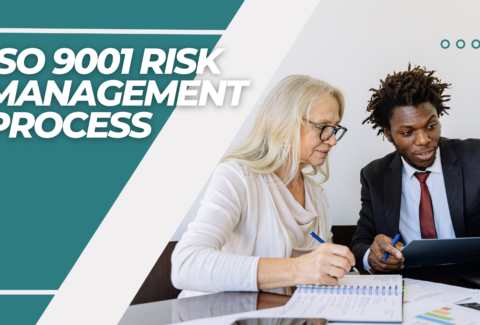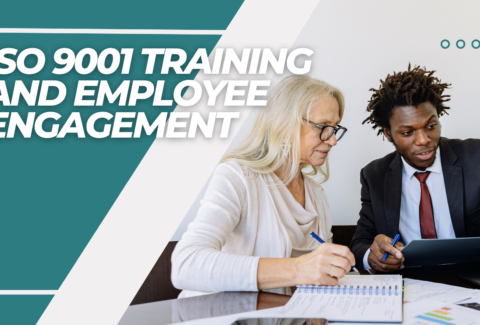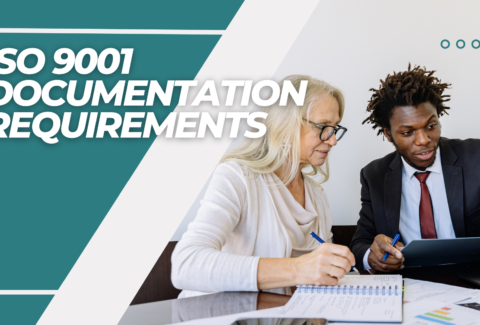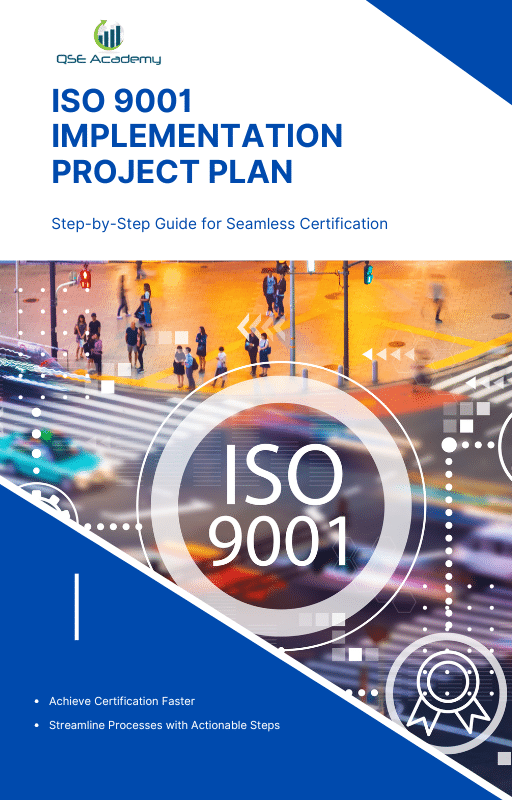How do I get ISO 9001 certification?
How do I get ISO 9001 certification?
Have you ever wondered how businesses get recognized for their commitment to quality? That’s where ISO 9001 certification comes in. If you’ve been curious about how to get ISO 9001 certification, you’re not alone. Many businesses, from small startups to global enterprises, aim for this certification because it’s a proven way to show the world they take quality seriously.
But let’s be honest, the process might feel a little intimidating at first. You might be asking yourself, “What steps do I need to take? Do I need to change everything about how I work?” Don’t worry—I’m here to walk you through it.
In this guide, we’ll break down exactly how to get ISO 9001 certification in simple, manageable steps. Whether you’re just starting to think about it or you’re ready to dive in, this article will give you the clarity and confidence to tackle the process.
By the time we’re done, you’ll see that getting ISO 9001 certified isn’t just about meeting a standard—it’s about improving your business, impressing your customers, and setting yourself up for success. So, let’s get started and explore how you can get ISO 9001 certification for your business!
What Does It Mean to Get ISO 9001 Certification?
Let’s start with the basics: what does it actually mean to get ISO 9001 certification? Well, think of it as a gold standard for quality management. When your business is ISO 9001 certified, it’s like having a seal of approval that says, “We’ve got our processes under control, and we’re fully committed to delivering consistent quality.”
ISO 9001 is an internationally recognized standard for quality management systems (QMS). It’s not just about ticking boxes—it’s about creating a structured approach to managing your business. By meeting the requirements of ISO 9001, you’re showing your customers, partners, and employees that you’re serious about delivering the best possible results.
But here’s the key thing: to get ISO 9001 certification, you need to demonstrate that your business follows these standards in practice—not just on paper. Certification is granted by an accredited body after they assess your QMS and confirm that it meets all the necessary requirements.
So, why does this matter? Beyond the prestige of certification, it builds trust. Whether you’re working with clients, suppliers, or potential partners, being able to say, “We’ve got ISO 9001 certification” gives you an edge. It shows you’re reliable, professional, and committed to continuous improvement.
In short, to get ISO 9001 certification means you’re aligning your business with internationally recognized quality practices. It’s not just about compliance—it’s about creating a system that helps your business grow and thrive. And trust me, the benefits are worth every bit of effort! Let’s dive into how you can make it happen.
Steps to Get ISO 9001 Certification
Now that we know what ISO 9001 certification is, let’s break down the steps to actually achieve it. Don’t worry—it’s not as overwhelming as it might sound. With the right plan, you’ll see that it’s a manageable process that leads to big rewards. So, let’s walk through how to get ISO 9001 certification step by step.
1. Understand the ISO 9001 Standard
The first step is to really understand what ISO 9001 is all about. Grab a copy of the standard (you can purchase it from an official source), and take some time to review it. This will give you a clear picture of the requirements you’ll need to meet to get ISO 9001 certification.
If you’re not a fan of reading technical documents, don’t worry—you can find plenty of guides and resources (like this one!) to help simplify things. The goal here is to understand the basics so you know what’s expected.
2. Perform a Gap Analysis
Next up, it’s time to assess where you stand. A gap analysis is like a roadmap that shows the difference between your current practices and the requirements of ISO 9001. It helps you pinpoint what needs to be improved or adjusted.
For example, do you already have processes for tracking customer feedback? Are your records organized and accessible? A gap analysis gives you a clear starting point so you can focus your efforts on what matters most. This step is essential for figuring out how to get ISO 9001 certification efficiently.
3. Develop Your Quality Management System (QMS)
Now that you know what needs to be improved, it’s time to build or refine your quality management system (QMS). Your QMS is the backbone of ISO 9001—it’s the system that ensures your processes are consistent, efficient, and aligned with the standard.
This might involve creating new policies, documenting procedures, or formalizing practices that you’re already doing. Remember, the QMS doesn’t have to be complicated—it just needs to work for your business. A well-designed QMS is a critical step to get ISO 9001 certification.
4. Train Your Team
Here’s the thing: ISO 9001 isn’t just about systems—it’s about people. To get ISO 9001 certification, your entire team needs to understand their roles in maintaining quality.
This is where training comes in. Make sure your employees know what the QMS is, why it’s important, and how they contribute to it. When your team is on board, the process becomes much smoother.
5. Conduct an Internal Audit
Think of an internal audit as a practice run. Before inviting an external auditor, you’ll want to test your QMS to make sure everything is working as it should.
During the internal audit, you’ll evaluate your processes, check for compliance with ISO 9001, and address any non-conformities. It’s better to catch and fix issues now than during the official certification audit!
6. Choose a Certification Body
Once you’re confident in your QMS, it’s time to find an accredited certification body to conduct your official audit. Choosing the right body is important—they’ll assess your system and determine if you’re ready to get ISO 9001 certification.
Look for a reputable organization that’s recognized in your industry. You can even ask for recommendations or check online reviews to make the right choice.
7. Undergo the Certification Audit
This is the final step! The certification audit is typically done in two stages.
- Stage 1: The auditor reviews your documentation to ensure your QMS aligns with ISO 9001 requirements.
- Stage 2: The auditor conducts an on-site assessment to see your QMS in action.
If everything checks out, you’ll officially get ISO 9001 certification! And don’t worry—if any issues arise during the audit, you’ll usually get a chance to address them.
8. Maintain Your Certification
Getting certified is a big achievement, but it doesn’t stop there. To keep your ISO 9001 certification, you’ll need to maintain your QMS and undergo regular surveillance audits. This ensures your system continues to meet the standard and keeps improving over time.
Wrapping It Up
By following these steps, you’ll be well on your way to get ISO 9001 certification. It’s a process, sure, but it’s one that leads to incredible benefits for your business. From improving your processes to building trust with customers, ISO 9001 certification is a game-changer.
So, are you ready to take the next step? With some planning and dedication, you’ll soon be able to say, “We’re ISO 9001 certified!” Let’s make it happen!
Common Challenges in Getting ISO 9001 Certification and How to Overcome Them
Let’s be real—working to get ISO 9001 certification isn’t always smooth sailing. Like any worthwhile goal, there can be some bumps along the way. But here’s the good news: these challenges are completely manageable, especially when you know what to expect and how to handle them. Let’s tackle a few common roadblocks and talk about how you can overcome them with confidence.
1. Feeling Overwhelmed by the Requirements
When you first start looking at the requirements for ISO 9001, it can feel like a lot. The language might seem technical, and you might wonder how everything applies to your business. Trust me, this is a common reaction!
The key here is to break it down into smaller, more manageable steps. Focus on one part of the process at a time—whether it’s performing a gap analysis or developing your QMS. Remember, you don’t have to do everything overnight. With a step-by-step approach, you’ll find that it’s easier to get ISO 9001 certification than you might have thought.
2. Resistance to Change
Let’s face it—people don’t always love change, especially when it involves new systems or processes. You might encounter some resistance from your team when you start implementing ISO 9001 requirements.
To overcome this, involve your employees early on. Explain why getting ISO 9001 certification is important and how it benefits everyone—not just the business, but also their day-to-day work. When your team understands the “why” behind the changes, they’ll be more likely to embrace them.
3. Lack of Time or Resources
Running a business is already demanding, and adding the process to get ISO 9001 certification might feel like one more thing on your plate. Finding the time and resources to make it happen can be challenging.
Here’s a tip: treat ISO 9001 as an investment, not an extra task. Allocate dedicated time and resources to the project, and consider bringing in external help if needed. Consultants or trainers can guide you through the process and save you a lot of time and effort.
4. Understanding the Documentation Requirements
ISO 9001 does require a certain level of documentation, and for some businesses, this can feel like a paperwork overload. But here’s the thing: it’s not about creating mountains of documents—it’s about having the right ones.
Focus on keeping your documentation simple, clear, and relevant to your business. You don’t need to reinvent the wheel. Many businesses use templates or software tools to streamline this process. And remember, the documentation is there to support your success, not complicate it.
5. Internal Audits and Non-Conformities
When it’s time to conduct internal audits, you might uncover areas where your processes aren’t fully compliant. This can feel like a setback, but it’s actually a good thing! Identifying non-conformities before the official audit is a chance to fix them.
Think of internal audits as a learning opportunity. Addressing issues early ensures you’re fully prepared for the certification audit. Plus, it sets the tone for a culture of continuous improvement, which is a big part of ISO 9001.
6. Choosing the Right Certification Body
Another challenge is selecting a certification body that’s reputable and accredited. Not all certification bodies are created equal, and choosing the wrong one could lead to unnecessary complications.
Do your research and look for a body with experience in your industry. Read reviews, ask for recommendations, and don’t be afraid to ask questions. Picking the right partner will make the process of getting ISO 9001 certification much smoother.
Overcoming Challenges is Part of the Journey
It’s important to remember that every business faces some challenges on the path to get ISO 9001 certification—and that’s okay! These challenges are just part of the process, and overcoming them is what makes the achievement so rewarding.
With the right mindset, a clear plan, and support from your team (or even external experts), you’ll be able to navigate these hurdles and come out stronger on the other side. Each step you take brings you closer to building a more efficient, customer-focused, and successful business.
So, if you’re hitting a roadblock, don’t stress. Take a deep breath, revisit your plan, and keep moving forward. You’re well on your way to achieving something amazing: ISO 9001 certification!
Benefits of Getting ISO 9001 Certification
So, why should you go through all the effort to get ISO 9001 certification? What’s in it for your business? Let’s talk about the real, tangible benefits that come with achieving this globally recognized standard. Spoiler alert: they’re worth it!
1. Build Trust with Customers
When you get ISO 9001 certification, you’re sending a powerful message to your customers: “We take quality seriously.” It’s a sign that your business is reliable, consistent, and focused on meeting their needs.
Think about it—wouldn’t you feel more confident working with a company that’s ISO 9001 certified? Your customers will feel the same way. It’s a trust-building tool that sets you apart from the competition and keeps your customers coming back.
2. Improve Your Business Processes
One of the biggest perks of ISO 9001 certification is that it forces you to take a close look at your operations. To get ISO 9001 certification, you’ll need to evaluate, streamline, and optimize your processes.
This means eliminating inefficiencies, reducing waste, and improving how your business runs on a daily basis. The result? A more organized, productive, and profitable operation. Who doesn’t want that?
3. Gain a Competitive Edge
In many industries, ISO 9001 certification is a must-have to even get a seat at the table. It’s often a requirement for bidding on contracts or partnering with larger organizations.
When you get ISO 9001 certification, you’re opening the door to new opportunities. It gives your business credibility and a competitive edge, showing potential clients and partners that you’re serious about quality and professionalism.
4. Increase Customer Satisfaction
Happy customers are loyal customers, and ISO 9001 is all about keeping them happy. The standard focuses on understanding customer needs, delivering consistent quality, and handling feedback effectively.
By meeting these goals, you’ll not only get ISO 9001 certification but also create a system that prioritizes customer satisfaction. Over time, this leads to stronger relationships and a reputation for excellence.
5. Foster a Culture of Continuous Improvement
ISO 9001 isn’t just about meeting a standard—it’s about continually improving. Once you get ISO 9001 certification, you’re committing to regularly reviewing your processes, identifying areas for improvement, and staying adaptable in a changing market.
This mindset of continuous improvement helps your business stay innovative and competitive. It’s not just about where you are now—it’s about where you’re headed.
6. Boost Employee Engagement
A well-implemented quality management system doesn’t just benefit your customers—it benefits your team too. Clear processes and defined roles make it easier for employees to do their jobs effectively and confidently.
When your team understands how their work contributes to the bigger picture, they’re more likely to feel motivated and engaged. To get ISO 9001 certification, you’ll be fostering a workplace culture that values quality and teamwork.
7. Reduce Risks and Improve Decision-Making
ISO 9001 focuses on identifying risks and finding ways to mitigate them. This proactive approach can save you from costly mistakes or disruptions.
Plus, the standard emphasizes data-driven decision-making. When you get ISO 9001 certification, you’re building a foundation for making smarter, more informed business decisions.
Final Thoughts on the Benefits
Getting ISO 9001 certification is more than just a milestone—it’s a game-changer for your business. From gaining customer trust to improving processes and unlocking new opportunities, the benefits are endless.
Sure, it takes some effort to get ISO 9001 certification, but the rewards make it all worthwhile. It’s an investment in your business’s future that pays off in so many ways. So, what are you waiting for? Let’s take that next step and make ISO 9001 certification a reality for your business!
Ready to Get ISO 9001 Certification? Here’s What’s Next
So, you’ve learned about the process, the challenges, and all the incredible benefits of ISO 9001 certification. But now you might be wondering, “What’s my next step to actually get ISO 9001 certification?” Don’t worry—this is where it gets exciting! Let’s map out what you can do right now to kickstart your journey.
1. Take a Close Look at Your Business
The first step to get ISO 9001 certification is to evaluate where your business stands today. Ask yourself questions like:
- Do we have clear processes for managing quality?
- How do we handle customer feedback or complaints?
- Are our documents and records organized and up-to-date?
This reflection will help you identify areas where your business is already strong and areas that might need improvement. It’s like setting a baseline before you move forward.
2. Build a Solid Plan
Getting ISO 9001 certified isn’t something you need to rush through. In fact, the process works best when it’s well-planned. Create a roadmap with clear steps and timelines to guide your business toward certification.
Your plan might include tasks like conducting a gap analysis, training your team, and preparing for internal and external audits. Breaking the process into smaller, manageable steps will make it feel less overwhelming and help you stay on track to get ISO 9001 certification.
3. Invest in the Right Resources
Whether it’s purchasing a copy of the ISO 9001 standard, hiring a consultant, or using software to streamline your quality management system, having the right tools and resources can make all the difference.
If you’re not sure where to start, consider reaching out to experts who specialize in helping businesses get ISO 9001 certification. They can provide guidance, share templates, and ensure you’re focusing on the right things.
4. Get Your Team Involved
Your team plays a huge role in achieving ISO 9001 certification. From leadership to frontline employees, everyone needs to understand how their work connects to the bigger picture.
Hold workshops or training sessions to explain the importance of ISO 9001 and how it benefits the company—and them. When your team feels involved and empowered, the journey to get ISO 9001 certification becomes a shared effort.
5. Stay Patient and Persistent
Let’s be honest: the process to get ISO 9001 certification can take time. It’s not something you’ll achieve overnight, but every step you take is progress. Stay focused on your goals, celebrate small wins along the way, and remember why you started this journey.
Think of it as building a foundation for long-term success. The effort you put in now will pay off with improved processes, happier customers, and new business opportunities.
Wrapping It All Up
Getting ISO 9001 certification might feel like a big task, but it’s also one of the most rewarding things you can do for your business. By taking small, consistent steps, building a strong quality management system, and involving your team, you’ll be well on your way to achieving this important milestone.
So, what’s next for you? Whether you’re just starting out or already in the middle of the process, remember this: every step forward is a step closer to success. You’ve got what it takes to get ISO 9001 certification, and your business will be stronger, more efficient, and better positioned for growth because of it.
Let’s make it happen! Are you ready to take the first step? Your ISO 9001 certification journey starts now.
Looking for More Resources on ISO 9001?
Looking for ISO 9001 Resources Tailored to Your Industry?
If this article helped clarify ISO 9001, take the next step with our industry-focused tools designed to simplify your certification journey:
📦 ISO 9001 Documentation Kits by Industry: Whether you’re in manufacturing, construction, consulting, or healthcare — we have complete, ready-to-use documentation tailored for your sector.
🎓 Online ISO 9001 Training: Learn how to implement ISO 9001 effectively with our easy-to-follow video lessons, real-world examples, and practical exercises.
📋 ISO 9001 Checklist: Download our step-by-step checklist to ensure your QMS meets all the 9001:2015 requirements from start to finish.
These resources are crafted to save you time, reduce stress, and help you achieve certification with confidence. Choose your industry and start now!

make ISO standards less intimidating and more approachable for everyone.
Whether it’s ISO 9001, ISO 22000, or the cosmetics-focused ISO 22716,
I’ve spent my career turning complex jargon into clear, actionable steps
that businesses can actually use. I’m not here to call myself an expert—I prefer “enthusiast” because I truly love what I do.
There’s something incredibly rewarding about helping people navigate food safety and quality management systems
in a way that feels simple, practical, and even enjoyable.
When I’m not writing about standards, you’ll probably find me playing Piano 🎹, connecting with people, or diving into my next big project💫.
- I’m an engineer specialized in the food and agricultural industry
- I have a Master’s in QHSE management and over 12 years of experience as a Quality Manager
- I’ve helped more than 15 companies implement ISO 9001, ISO 22000, ISO 22716, GMP, and other standards
- My clients include food producers, cosmetics manufacturers, laboratories, and service companies
- I believe quality systems should be simple, useful, and efficient
- Outside of work, I play piano and love learning something new every day
Let’s make ISO less about stress and more about success! 🙏

